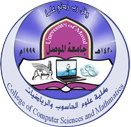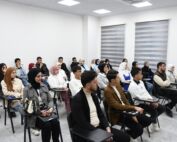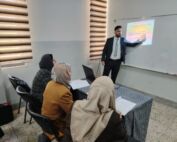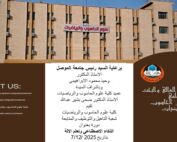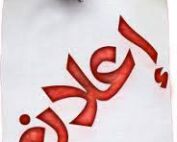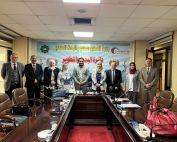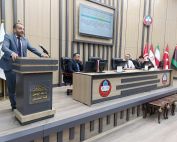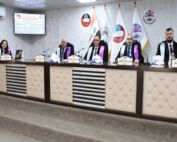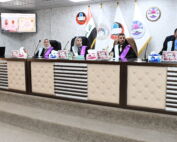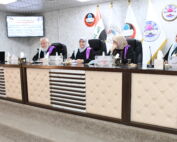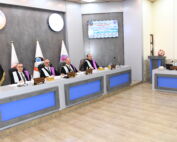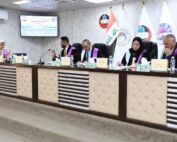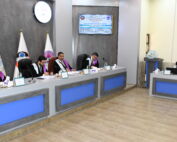30 January، 2023
“chaotic Behaviour and Control in continuous Models with Applications”
Discussion of a master’s thesis in the College of Computer Science and Mathematics – Department of Mathematics Sciences entitled:”chaotic Behaviour and Control in continuous Models with Applications”In continuation of the scientific research movement and with the follow-up and presence of the Dean of the College of Computer Science and MathematicsProf. Dr. Duha Bashir Abdullah The esteemedIt was discussed in the discussion room at the Faculty of Computer Science and Mathematics at the University of Mosul on Monday30-1-2023Master’s thesis by studentAbothar Abdullah KalalfAljuburi, underthe supervision of Professor Dr. Maysoon Mal Allah Aziz . In this thesis, three continuous-time dynamical systems were presented, the first is two-dimensional, the second is three dimensional, and the third is six-dimensional. The dynamical systems were analyzed, and the basic characteristics and dynamical behavior of these systems were found, which included finding equilibrium points. Characteristic roots equation, Ruth stability criteria, Hurwitz stability criteria, Lyapunov Function, Continued Fraction stability criteria, wave form analysis, dissipativitty, bifurcation, Lyapunov exponent, and Kaplan-York dimensionand It was found that the results are good, as the paths of the motor systems become stable. The differential equations for each system were used and solved by Runge-Kutta numerical method of fourth and fifth orders to obtain the simulation date. It became clear from these characteristics that these dynamical systems are unstable and chaotic with hidden attractions and self-motivation. Chaos control was controlled using the adaptive control technique, where an ideal control unit was created. Kaplan-York dimension. Differential equations were used for each system and solved by Runge-Kutta numerical method of fourth and fifth orders to obtain data. It became clear from these characteristics that these motor systems are unstable, chaotic, with hidden attractors, and self-exited attractors. Chaos control was controlled using the adaptive control technique, where an ideal control unit was created. The theoretical results and graphs of the dynamical systems were compared before and after control. It turns out that the results are good, as the paths of the motor systems become stable. An electronic circuit was designed as an application on the six-dimensional system consisting of resistors, capacitors, voltages and operationalamplifiers, where the results were obtained from Multi Sim12, and it was found that the designed electronic circuit simulates the theoretical results of the six dimensional dynamical system wellThe scientific committee included the following members :
- Professor Dr. MizalHamadThawi- University of Tikrit / College of Computer Science and Mathematics
- Assistant Professor Dr. Ahmed Intisar Ghaith- Member.
- ZahraaAbdulazizTaha- Member .
- Professor Dr.Maysoon Mal Allah Aziz – Member and supervisor .
